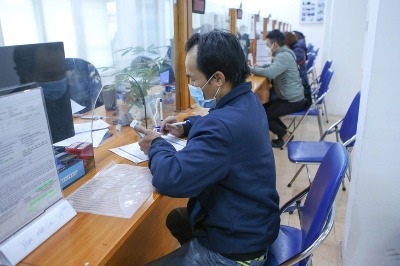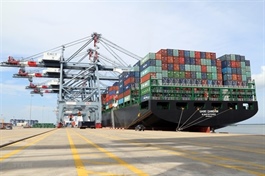Vietnamese firms cut up to 75% of staff amid adverse conditions
Vietnamese firms cut up to 75% of staff amid adverse conditions
A lot of Vietnamese enterprises in various sectors have cut down their workforces, by 25-75 percent, and have scaled down operations due to unfavorable business conditions, as reported in their financial statements for the third quarter of this year.

This image shows people carrying out procedures to receive unemployment benefits at the Hanoi Employment Service Center. Photo: Ha Quan / Tuoi Tre |
In response to the current difficult economic situation, reduced purchasing power, falling demand for goods, and declining orders, many Vietnamese businesses said they had no choice but to shrink operations and lay off workers.
The decline in global aggregate demand, identified by leading Vietnamese human resources provider Navigos Group as the primary cause of these unfavorable conditions, has resulted in reduced import demand in many major markets, negatively impacting exports from numerous countries.
Vietnam is not an exception, with 68 percent of local businesses having to make large-scale lay-offs to cope with adverse market fluctuations, a survey by Navigos Group revealed.
Electronics retail giant The Gioi Di Dong (Mobile World), based in Ho Chi Minh City, reduced its staff by about 5,600 employees over the first nine months of this year to some 68,300 people at the end of September 2023.
The firm also said it has a plan to shut down 200 more stores in the future.
Ho Chi Minh City-based Garmex Saigon, one of Vietnam's leading apparel manufacturers, has fired more than 2,000 employees since the beginning of the year.
Many banks, such as VPBank, SHB, LPBank, SeABank, and TPB, have laid off workers en masse due to the impacts of economic difficulties.
VPBank saw the largest staff lay-off, reducing its workforce by over 4,400 employees to reach a total of 24,600 by the end of the third quarter.
The real estate sector has also witnessed workforce reductions, as property developer Dat Xanh Group terminated the employment of 1,300 employees.
Navigos Group reveals that fewer than 25 percent staff cuts were the preferred option for most Vietnamese businesses, while the securities, financial services, garments, and footwear industries saw considerably higher workforce reductions, ranging from 25 percent to 50 percent.
Significantly, businesses involved in construction, real estate, and consultancy services recorded discharge rates ranging from 50 to 75 percent.
In January-November, 158,800 businesses across the country withdrew from the market, an increase of 20 percent from a year earlier, according to the General Office of Statistics (GSO).
That means 14,400 entities shut down every month, causing a large number of job losses, the GSO said.
In an interview with Tuoi Tre (Youth) newspaper, Tran Quang Thang, director of the Ho Chi Minh City Institute of Economics and Management, said that the increase in labor cuts has reached a worrying level and requires timely support.
The rate of people receiving unemployment benefits in the city recently climbed by nearly 10 percent, with beneficiaries originating from garment and footwear companies and from industrial parks and export processing zones, Thang said.
Thang called on designated agencies to take measures to support enterprises so as to prevent the wave of dismissals amid difficult economic conditions.
























